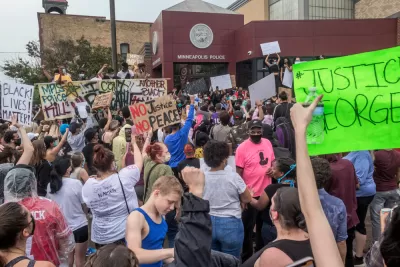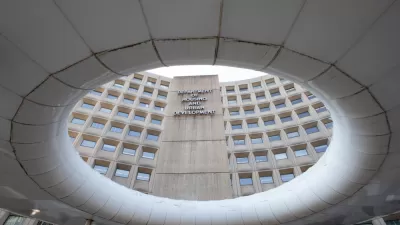The nation's fair housing policies are built on a foundation of assumptions that neglects the community and culture of low-income neighborhoods.

Edward G. Goetz, Anthony Damiano, and Rashad Williams explain the work of a coalition called Equity in Plan to shift the discussion about fair housing in the Twin Cities. According to the article, Equity in Place (EIP) has shifted the discussion about fair housing with a simple question: "Why do we think moving to white neighborhoods will solve our problems?"
The question has its roots in the fair housing battles surrounding disparate impact and affirmatively furthering fair housing, which attempt to overcome a history of discriminatory planning and development policies that concentrated public housing resources in areas of high poverty. EIP makes the case that the fair housing narrative neglects the communal and cultural identity of these neighborhoods.
"EIP first emerged in 2013, in response to the Metropolitan Council’s decennial regional plan, Thrive MSP 2040," according to the article. The regional plan was built on a "a Fair Housing Equity Assessment that, in accordance with HUD’s directives, emphasized the identification of both 'racially concentrated areas of poverty' (RCAPs, later amended by HUD to RECAPs—racially/ethnically concentrated areas of poverty) and 'high opportunity areas,'" according to the article.
EIP organizers created a three-pronged response: regarding narrative, EIP wanted to challenge the dominant storyline that portrays RECAPs as the central problem of regional equity; in policy terms, EIP wanted to challenge the dominant housing strategy that focused on moving people to “opportunity neighborhoods”; and, in political terms, the group demanded a place at the table for low-wealth communities of color when decisions about those communities are being made. Most fundamentally, EIP wanted to redefine regional equity in ways that include “building the economic, cultural, political, human and social capital of the places people of color already call home”
"Between 2013 and 2020, a central element of EIP’s work was investigating the unstated assumptions of this opportunity framework and expressing them in easily understood language," according the article.
A lot more detail on the fruits of that work is included in the source article.
FULL STORY: ‘Opportunity Areas’ Shouldn’t Just Be Places With A Lot of White People

Alabama: Trump Terminates Settlements for Black Communities Harmed By Raw Sewage
Trump deemed the landmark civil rights agreement “illegal DEI and environmental justice policy.”

Planetizen Federal Action Tracker
A weekly monitor of how Trump’s orders and actions are impacting planners and planning in America.

The 120 Year Old Tiny Home Villages That Sheltered San Francisco’s Earthquake Refugees
More than a century ago, San Francisco mobilized to house thousands of residents displaced by the 1906 earthquake. Could their strategy offer a model for the present?

In Both Crashes and Crime, Public Transportation is Far Safer than Driving
Contrary to popular assumptions, public transportation has far lower crash and crime rates than automobile travel. For safer communities, improve and encourage transit travel.

Report: Zoning Reforms Should Complement Nashville’s Ambitious Transit Plan
Without reform, restrictive zoning codes will limit the impact of the city’s planned transit expansion and could exclude some of the residents who depend on transit the most.

Judge Orders Release of Frozen IRA, IIJA Funding
The decision is a victory for environmental groups who charged that freezing funds for critical infrastructure and disaster response programs caused “real and irreparable harm” to communities.
Urban Design for Planners 1: Software Tools
This six-course series explores essential urban design concepts using open source software and equips planners with the tools they need to participate fully in the urban design process.
Planning for Universal Design
Learn the tools for implementing Universal Design in planning regulations.
Clanton & Associates, Inc.
Jessamine County Fiscal Court
Institute for Housing and Urban Development Studies (IHS)
City of Grandview
Harvard GSD Executive Education
Toledo-Lucas County Plan Commissions
Salt Lake City
NYU Wagner Graduate School of Public Service





























